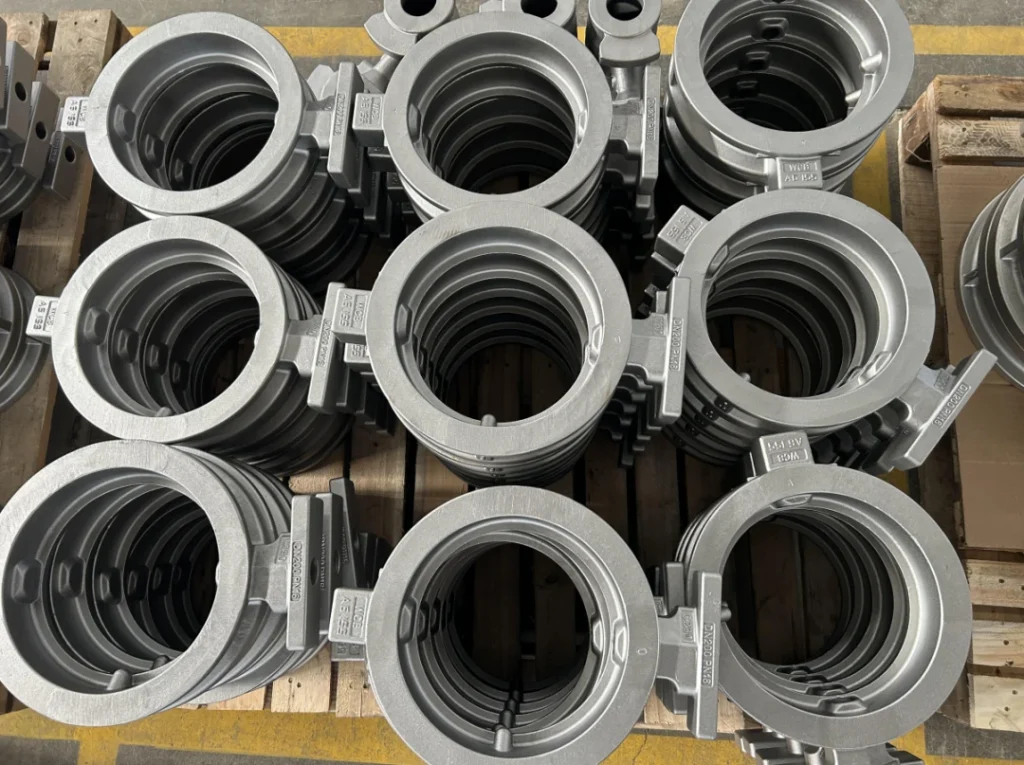How to Ensure Defect-Free Large-Scale Casting Alloys in China
In industrial production, achieving defect-free large-scale casting alloys in China remains one of the most demanding challenges for OEMs, industrial buyers, and heavy machinery producers. Companies involved in precision casting alloys manufacturing o industrial casting alloy production often face issues such as porosity, dimensional deviation, and inconsistent alloy composition.
These defects not only increase rejection rates but also cause production delays, higher costs, and brand reputation damage—particularly in automotive casting alloy manufacturing y high-strength alloy casting manufacturing for export projects in China and beyond.
Customer Pain Points in How to Ensure Defect-Free Large-Scale Casting Alloys in China
Imagine an automotive OEM sourcing large-scale casting alloy manufacturers in China. Despite choosing well-known suppliers, they receive castings with surface cracks or shrinkage defects, leading to assembly line stoppages.
Similarly, a heavy machinery exporter experiences dimensional deviations y shipment delays due to inconsistent metal casting alloy production standards.
Key Pain Points in Large-Scale Casting Alloy Manufacturing
- High defect rates and part rejections in large-scale alloy castings.
- Dimensional inconsistencies causing assembly misfits.
- Non-compliance with ASTM B108o ISO 945-1 standards, risking export rejection.
- Difficulty finding cost-effective industrial casting alloy suppliers in Chinathat reliably serve USA, EU, Brazil, and India markets.
These issues make manufacturers repeatedly ask:
“How to Ensure Defect-Free Large-Scale Casting Alloys in China?”
Root Cause Analysis: How to Ensure Defect-Free Large-Scale Casting Alloys in China
Technical Causes in Large-Scale Casting Alloy Manufacturing
- Alloy composition imbalance:Deviations in non-ferrous alloy casting can cause brittleness or porosity.
- Mold and gating design errors:Poor mold design traps air, creating voids or cold shuts.
- Improper melting and pouring control:In high-strength alloy casting manufacturing, temperature variation leads to segregation or shrinkage cavities.
- Insufficient post-casting treatment:Inadequate heat treatment or machining results in micro-cracks and residual stress.
Management Causes in Large-Scale Casting Alloy Manufacturing
- Lack of supplier audits (missing ISO 9001 / IATF 16949verification).
- Weak real-time inspection and process monitoring in precision casting alloy manufacturing.
- Poor communication of drawings and tolerances between suppliers and international OEM buyers.
Industry Impact: How Defects Affect Large-Scale Casting Alloy Manufacturing
| Impact Area | Description | Business Consequence |
| Cost | Scrap, rework, re-melting, and inspection overheads | 10–20% higher per-unit cost |
| Delivery | Missed deadlines and order backlogs | Disrupted OEM supply chain |
| Quality | Reduced mechanical performance | Warranty claims, customer complaints |
| Reputation | Loss of buyer trust in export markets (EU/USA) | Decreased repeat orders |
Example:
A European machinery firm suffered a 20% return rate due to porosity defects from a supplier in China.
After switching to a certified large-scale casting alloy manufacturer, the defect rate fell to under 2%, and lead time improved by 15%.
Short-Term Measures to Ensure Defect-Free Large-Scale Casting Alloys in China
- Conduct incoming material inspections and chemical composition checks per ASTM B108y ISO 945-1.
- Introduce CMM-based dimensional inspectionfor precision casting alloys manufacturing.
- Request NDT (non-destructive testing)reports for each shipment to ensure defect-free castings.
Long-Term Optimization Strategies for Large-Scale Casting Alloy Manufacturing
- Partner with certified casting alloy suppliers in Chinaexperienced in OEM export compliance.
- Establish supplier development programs for custom casting alloy manufacturing.
- Implement real-time process monitoringto track key metal casting alloy production metrics.
- Audit suppliers for ISO 9001, ISO 14001, and IATF 16949
- Strengthen technical communicationwith overseas clients on design revisions and testing standards.
Before vs. After Supplier Optimization in Large-Scale Casting Alloy Manufacturing
| Metric | Previous Supplier | Optimized Supplier | Improvement |
| Defect Rate | 18% | 1.8% | 10× reduction |
| Lead Time | 45 days | 38 days | 15% faster |
| Export Compliance | Multiple rejections | 100% acceptance | Full compliance |
Defect Reduction Process Flow to Ensure Defect-Free Large-Scale Casting Alloys in China
- Raw Material Quality Check →
- Melting & Pouring Control →
- Mold and Gating Optimization →
- Heat Treatment →
- Dimensional & NDT Inspection →
- Packaging & Export
This approach ensures defect-free large-scale casting alloy manufacturing while improving consistency and compliance for international markets.
Frequently Asked Questions
What standards apply to large-scale casting alloy manufacturing?
Refer to ASTM B108, GB/T 9438, and ISO 945-1, which define alloy composition, porosity limits, and dimensional accuracy.
How can OEMs verify a supplier’s reliability in China?
Conduct supplier audits, review ISO/IATF certifications, request NDT and CMM inspection reports, and validate samples before mass production.
What NDT methods are most effective for defect detection?
X-ray, ultrasonic, and dye penetrant testing are the most common for identifying internal and surface defects in precision casting alloy parts.
This article is authored by the Welleshaft Engineering Team, specialists in casting, machining, and quality assurance for international OEMs. With over 5 years of experience in export casting alloy projects for automotive and heavy machinery industries, Welleshaft provides end-to-end manufacturing optimization y defect-prevention solutions.

